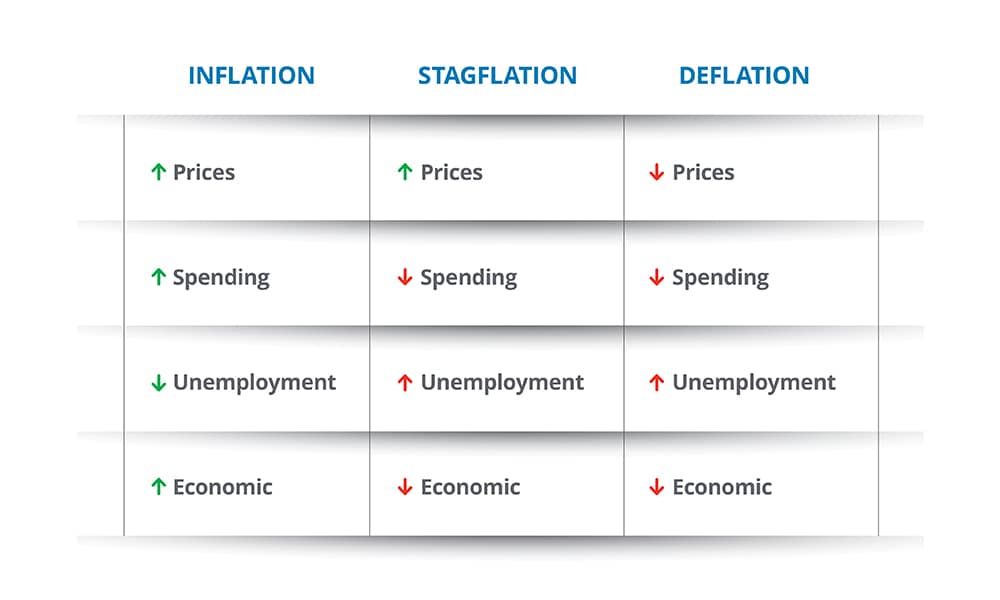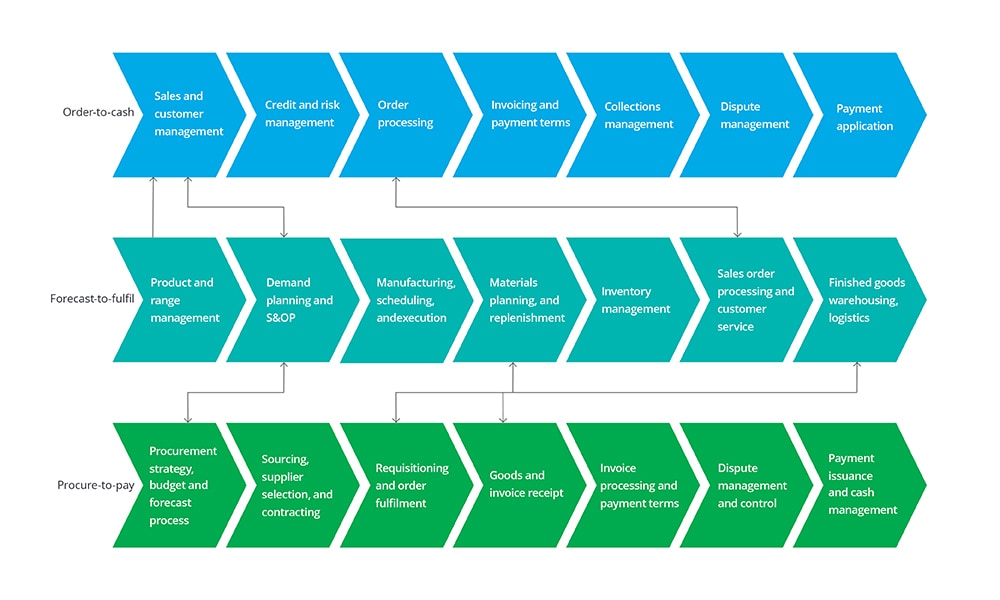Managing liquidity before inflation heats up has been saved

Perspectives
Managing liquidity before inflation heats up
Benefits of having a strong cash management foundation
As the global economy continues to adjust to the next normal, how can executives prioritize initiatives to mitigate their organizations’ risks to inflation and pull off the tough task of managing liquidity for the benefit of their stakeholders? The solution could lie in working capital improvement.
Low levels of inflation are considered positive economic drivers when they help boost demand, lower unemployment, and drive economic growth. However, persistent long-term inflation or high rates of inflation can result in stagflation or deflation. Stagflation is when persistent high inflation, combined with high unemployment, lowers spending and results in lower overall economic growth. Deflation is much worse than inflation and stagflation since economic growth slows significantly while consumers wait for prices to drop. This further reduces spending, which leads to a deterioration in corporate revenue and profitability and drives unemployment significantly higher.
There’s a fine line between low levels of inflation, short-term transitory inflation, and persistent inflation. Even what starts off as low or transitory inflation can become persistent inflation if consumers and businesses keep expecting prices to increase in the future and change their behavior to account for those expectations. That is why a company should be prepared to respond to these changes by having a strong cash management foundation. While the strategies in any of these scenarios may be similar, the extent of the actions will change as inflation increases in magnitude and duration.
Withstanding disruptions with working capital improvement
A company can create strategic advantages by actively managing its working capital and being prepared for disruptions or challenges like inflation in the economic environment. By having a constant focus on cash, executives can leverage the current inflation cycle and related uncertainty to make their enterprise more competitive and not fall victim to market dynamics. By focusing on each working capital sub-cycle’s ability to meet inflation-driven changes, events, and challenges, enterprises can release cash and maximize purchasing power as inflation unfolds.
Agility within the order-to-cash, forecast-to-fulfill, and procure-to-pay subcycles is simply how quickly a company’s people, process, and technology can react and be responsive to market changes, events, and challenges to stabilize its cash conversion cycle. Rising inflation affects the various functions of a company and each of its working capital sub-cycles very differently.
Executives should seek to understand how both moderate and persistent inflation affects their business and prepare for increasing levels of inflation to remain competitive. As geopolitical events unfold and supply chains respond post-pandemic, the global economy will continue seeking a new normal. A company’s focus on its working capital process to minimize its cash conversion cycle can serve as a competitive advantage against peers and reduce the impact of outside factors such as inflation.
Maximizing the purchasing power of cash flows through agility
As inflation persists, less agile companies may appear profitable, while simultaneously experiencing losses in purchasing power and credit worthiness. This occurs when collections are not timely, when bad debt increases due to rapid deterioration of creditworthiness, and material and wage costs are not passed along to customers timely. Being agile and reacting quickly to changes like these allows enterprises to maximize the purchasing power of their cash flows in inflationary times.
Executives seeking to increase agility and respond to future inflation and profitability concerns can begin to prioritize their enterprises’ responsiveness with a focused effort on improving across each of the key working capital processes, including a few of the following areas:
Future of Work: Ways of working in uncertain times
Order-to-cash
Early and first recipients of inflated money can act earlier. Consider focusing on the order-to-cash cycle first by conducting an assessment of the entire cycle. Assess each sub-cycle component:
- Customer onboarding and master data collection
- Setting credit limits and terms based on credit worthiness
- Quoting prices and invoicing
- Collection operations
- Dispute management
- Cash application
If upstream or downstream processes suffer from bad data; a lack of controls; or people, process, or technology failures, then efficient timely collection simply does not happen. In accelerating inflationary times, this means a loss of purchasing power and profitability.
Forecast-to-fulfill
Agile operations provide a competitive advantage to companies capable of reacting to changing conditions faster than their peers. Consider focusing on:
- Building a diversified supply chain to proactively address supply chain disruptions
- Reviewing or rationalizing products and variants
- Assessing how the organization forecasts its demand planning and inventory carry concerning its sales and supply chain constraints
Addressing supply chain issues and assessing demand and supply plans reduces delivery uncertainty while rationalizing variants and products can reduce operating complexity.
Procure-to-pay
Larger market participants can manage the effects of inflation easier than smaller organizations (e.g., pre-buying and paying in inflated dollars). Consider assessing each sub-cycle component, and focus specific attention on three areas:
- Payment execution to identify early payments
- Reviewing the vendor master data to ensure it matches contracted pricing and terms
- Evaluating payment methods and timing
Validating vendor master and contract data and shifting vendors with incorrect or outlier terms before inflation concerns arise can help companies increase cash and their purchasing power. Additionally, looking at the frequencies of payment runs and how payments are selected and made can provide opportunities for a company to hold on to its cash longer and improve liquidity.
Preparing for increasing levels of inflation
A robust framework for understanding and managing liquidity should be a priority for companies in any economic environment. For companies that have not undertaken this task, the current macroeconomic environment led by potential high inflation is an impetus to take a deeper dive into their working capital cycles to mitigate near-term liquidity risk and position their balance sheets for long-term growth opportunities.
Get in touch
Michael Quails, Managing Director |
Anthony Jackson, Principal |
Contributors
Victor Aguilar, Senior Vice President |
Recommendations
Unlocking capital freedom: Mastering working capital performance in a post-pandemic world
Deciphering the keys to corporate resilience and liquidity amid global economic uncertainties
Sustainable cash flow is a must for uncertain times
How companies can position themselves for resiliency




